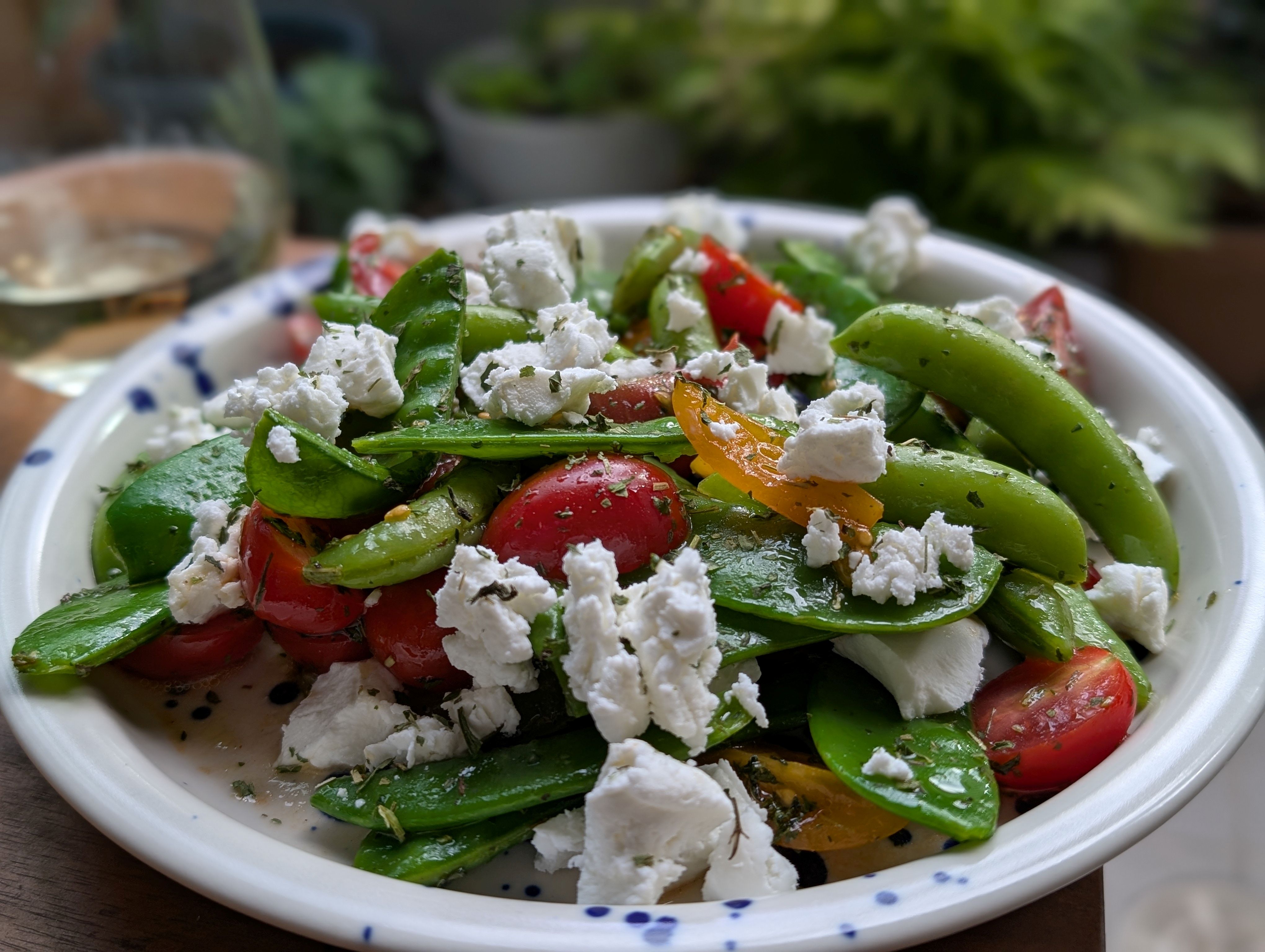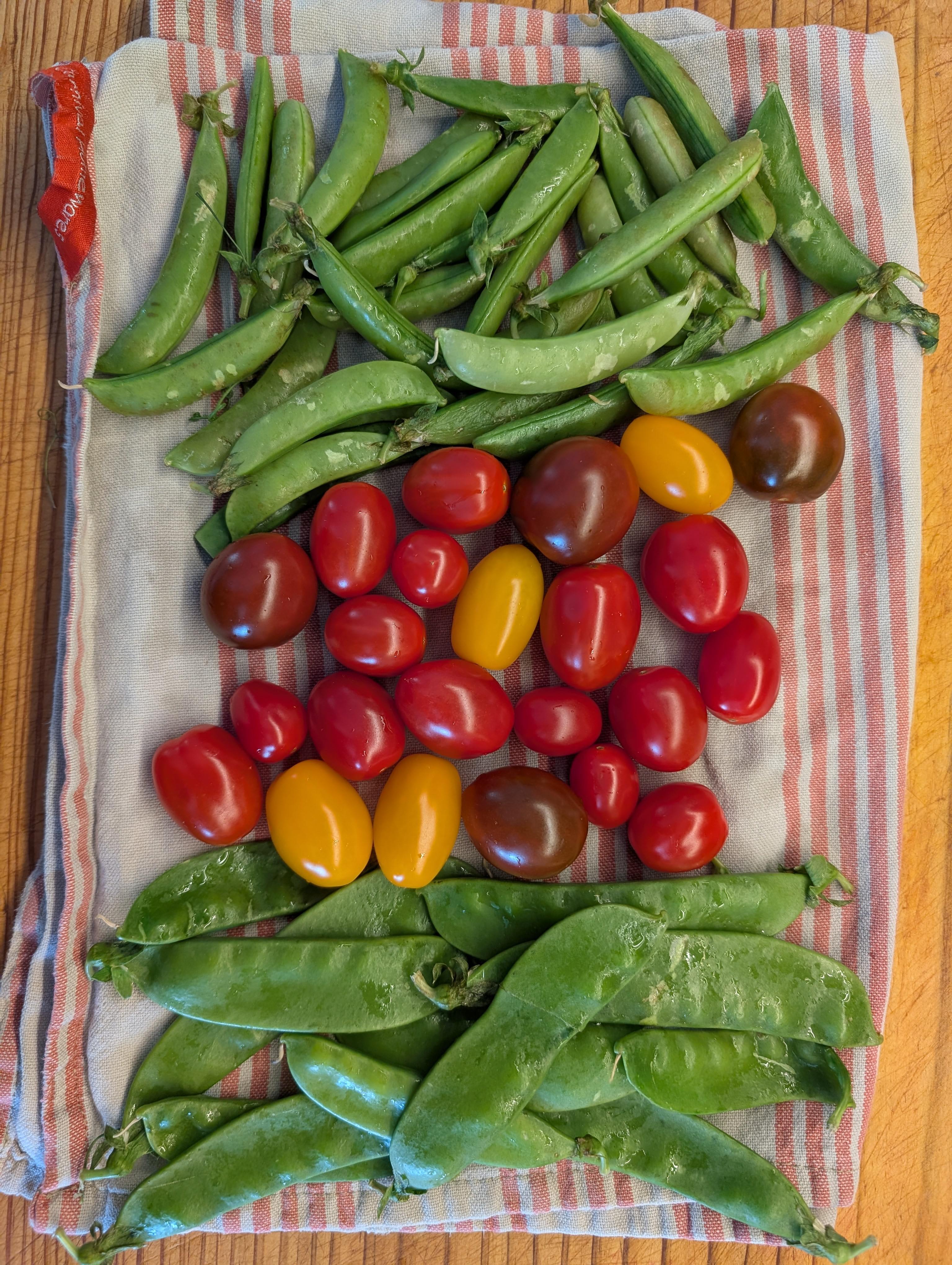Stuffed Capsicum
These stuffed capsicums are the sort of low-fuss meal I keep coming back to. They’re happy made ahead and served warm or at room temperature, which makes them ideal for lazy lunches or unfussy entertaining.

There’s a school of thought that treats recipes as sacred texts — immutable, untouchable, to be followed exactly lest your dinner collapse in shame. I am not enrolled at that school. I transferred long ago to the far more chaotic (and frankly more fun) institution of Recipes as Templates.
Recipes, to me, are suggestions. They’re starting points. Sure, you can follow the score to the letter, but where’s the joy in that?
We tweak, we substitute, we experiment — sometimes out of creativity, sometimes out of necessity, and sometimes because the supermarket has let us down. How can they be out of feta again?
Case in point: a salad we ate this week. The recipe began as a Pea, Mint & Feta number; a light, green, ideal for that spring/summer liminal space.
Substitutions easily made:

And that, dear reader, is where the philosophical question pops up like a mint leaf in your teeth:
How far can you change a recipe before it’s no longer the same recipe?
If I swap the feta for halloumi, and the mint for basil, and the tomatoes for plum, am I still making Pea, Mint & Feta Salad? Or have I birthed a new creation entirely?
Somewhere, the ghost of the ship of Theseus (and possibly a few cookbook authors) is having a quiet existential crisis.
It’s not just about tossing in whatever’s rolling around in the crisper drawer. There’s a kind of logic to making good swaps.
Texture: Think about crunch vs creaminess vs chew. If the original recipe calls for fresh tomatoes, don’t sub in tinned ones unless you like a sad, mushy salad. Each ingredient has a role: crisp peas, juicy tomatoes, crumbly feta — it’s a textural party.
Visuals: This salad is a postcard from early summer — all greens and reds and creamy whites. If you sub too far away from that palette, you lose part of the charm. That said, if you end up with something purple and fabulous, who am I to stop you?
Flavour profile: Sweetness, acidity, freshness — that’s the holy trinity here. If you’re swapping, aim for cousins, not strangers. Basil instead of mint? Great. Coriander instead? Bit of a wildcard, but maybe you’re feeling brave.
I think of recipes as permission slips rather than rulebooks. They give you the structure to start, but the freedom to wander.
Sometimes you scale up for a crowd. Sometimes you scale down because you live alone and can’t handle leftovers again. Sometimes you swap ingredients because of allergies, or budgets, or just because you forgot something and can’t face another grocery run.
The point isn’t perfection. It’s play. Cooking should feel like a conversation between you and the food — a little give, a little take, a mutual understanding that neither of you is set in stone.
So go forth. Sub the feta. Trade the herbs. Live your culinary truth. And if anyone asks what you’re making, just smile mysteriously and say, “Well, it started as a salad…”
These stuffed capsicums are the sort of low-fuss meal I keep coming back to. They’re happy made ahead and served warm or at room temperature, which makes them ideal for lazy lunches or unfussy entertaining.
The recipe is basically a riff off a Nigella Lawson recipe. Recipes never come out of thin air; we are inspired by mere fact of existing in the world.
At this time of year, I think of everyone working in retail and hospitality. I was one of them for most of my life. The pressure to go the extra mile is real, especially when you are already stretched thin. This year feels different.